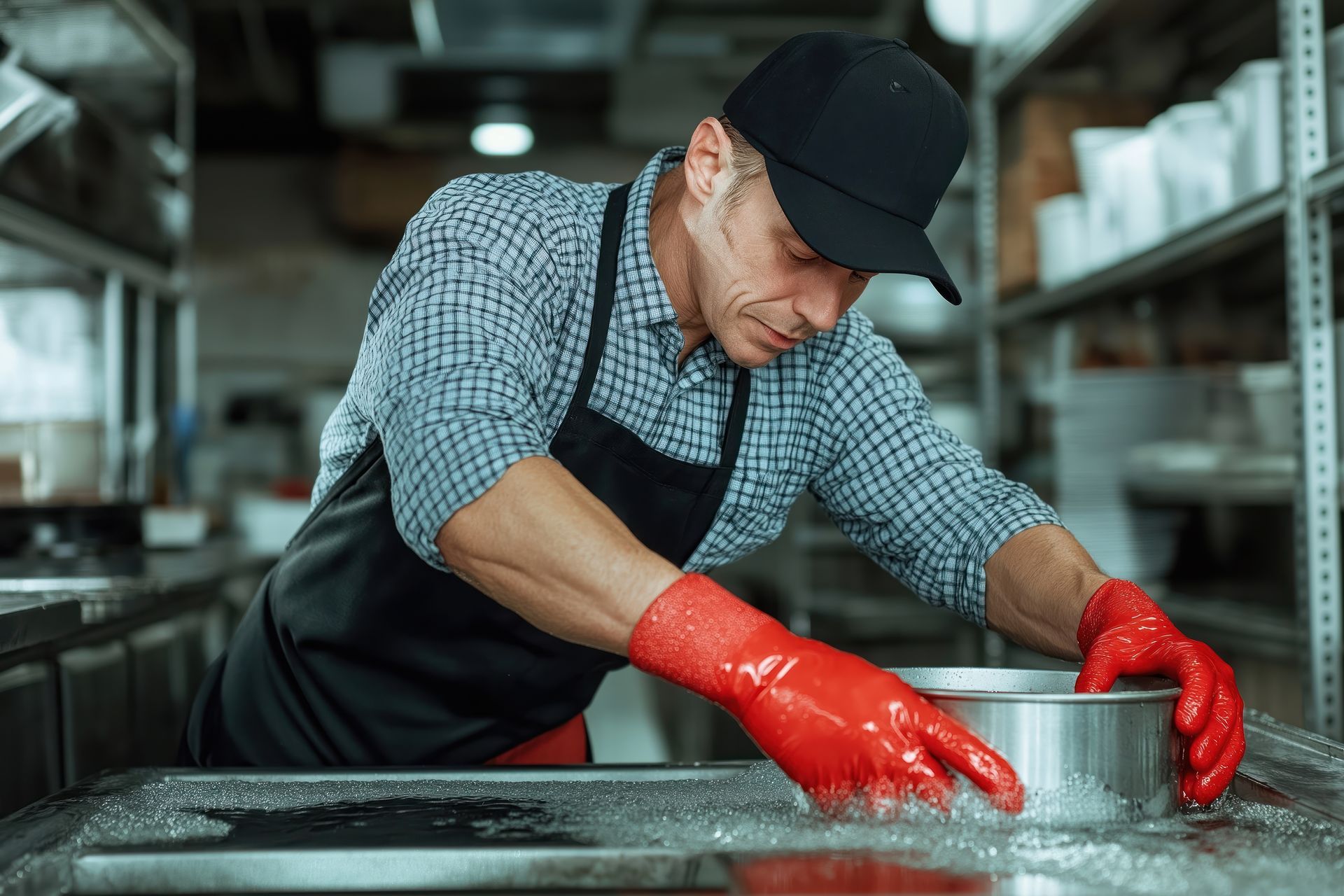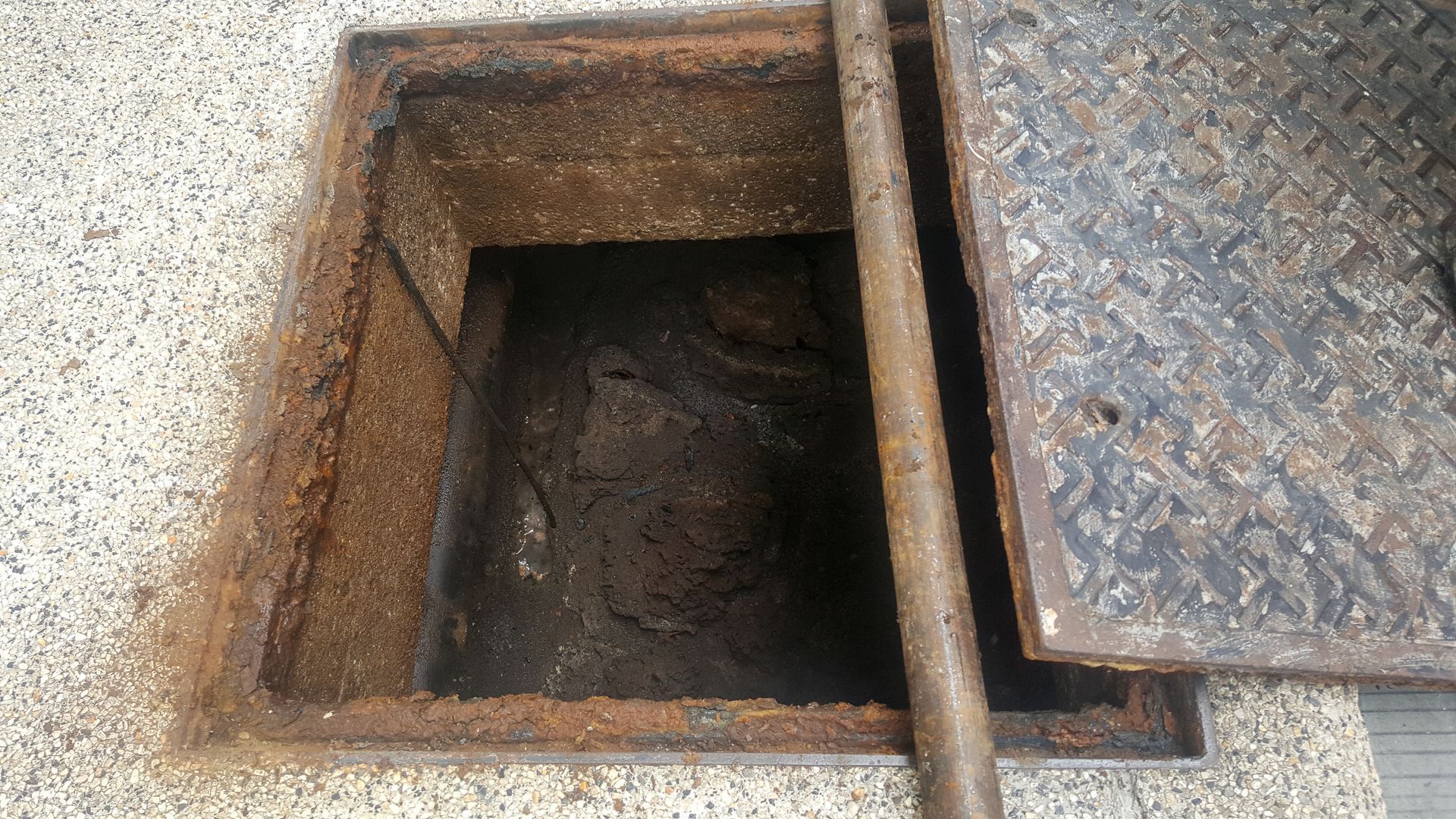When One Grease Trap Isn’t Enough for Atlanta Kitchens

For many small or medium-sized commercial kitchens, a single grease trap is enough to capture fats, oils and grease (FOG) and remain compliant with watershed management regulations. But for larger, high-volume commercial kitchens and food service facilities, especially those with multiple prep areas, high-volume dishwashing stations or complex layouts, one grease trap simply won’t cut it. In these cases, a single grease trap may not meet permitted capacity requirements, and additional traps may be installed to supplement an existing interceptor or segment flow more effectively.
If your facility struggles with frequent clogs, persistent odors or grease buildup despite regular cleanings, it may not be a matter of poor maintenance. You might just need a smarter, more segmented grease management approach.
What Is a Multi-Trap System?
A multi-trap system involves installing more than one grease trap in different sections of a commercial kitchen or facility. Instead of relying on a single large trap to collect FOG from every drain, water lines are segmented so each key area has its own dedicated trap.
Common configurations include:
- One trap near prep sinks (where vegetable scraps, oil, and food particles get washed down)
- One trap near the dish pit (which handles heavy grease and detergent-laden wastewater)
- Another near floor drains (especially in facilities that clean with hose-down methods)
Each trap handles the specific type and volume of waste typical for that area, which greatly reduces the chance of overloading any single trap.
Why One Grease Trap Often Falls Short
In large or busy kitchens, wastewater doesn’t always flow uniformly. Think about how different sections of your kitchen operate:
- Prep stations might generate moderate, consistent levels of food debris and light grease.
- Dishwashing areas produce sudden surges of hot water, detergent and concentrated grease from pans and trays.
- Mop sinks or floor drains may carry greasy residues during clean-up hours.
When all of this flows into one trap, the system gets overwhelmed. Hot water and soap from dishwashers can also liquefy grease, allowing it to slip through a single trap and re-solidify downstream, creating blockages in pipes or the municipal sewer system.
What Types of Businesses Need Multi-Trap Systems?
1. Large-Scale Restaurants or Food Courts
Restaurants with multiple kitchen lines, or food courts with several tenants, benefit from isolating grease output per zone. This improves compliance and makes maintenance easier to schedule and monitor.
2. Schools, Hospitals and Institutional Kitchens
These kitchens are often built for volume, feeding hundreds of people per day. With prep stations, cooking lines and dishwashing bays spread across large footprints, single-trap setups frequently underperform.
3. Hotels and Banquet Halls
Events generate large, fast surges of kitchen activity. A multi-trap setup ensures smooth operation during peak service windows.
4. Commissaries and Shared Kitchens
When different chefs or vendors use a shared space, a multi-trap system helps isolate and control the grease load from each section, reducing overall risk and improving sanitation.
5. Retrofits in Older Buildings
In older buildings where adding a large, centralized grease trap is difficult due to space or plumbing limitations, a staggered multi-trap system offers a more feasible and compliant upgrade.
Benefits of a Multi-Trap System
- Better Flow Control: Grease traps sized and placed based on the flow of each kitchen zone perform more efficiently and last longer between cleanings.
- Easier Maintenance: Smaller traps in specific areas are quicker to clean and easier to inspect individually, minimizing downtime or disruption to the entire kitchen.
- Fewer Plumbing Issues: With grease captured at the source, there’s less chance of buildup forming deep in the plumbing system, reducing the risk of costly repairs.
- Improved Compliance: The priority of watershed management officials is to ensure FOG doesn’t reach city sewers. A multi-trap setup demonstrates that businesses take FOG seriously and have invested in a system that, when properly maintained, can protect local sewers.
Custom Grease Trap Maintenance and Cleaning Strategies
There’s no one-size-fits-all approach to grease trap maintenance. Factors like kitchen layout, peak usage times and existing plumbing can influence the necessary cleaning frequency. Some businesses may only need the mandatory cleaning every 90 days, while others may require significantly more frequent cleaning to remain in compliance with the 25% rule.
At Southern Green Industries, we specialize in evaluating your kitchen’s grease trap cleaning needs and helping you stay ahead of clogs, overflows and compliance issues. Whether you operate a single indoor trap or manage a multi-trap system with large outdoor interceptors, we tailor our service schedule to match your kitchen’s volume and demands.
Keep Your Grease Traps Clean and Compliant With Top-Notch Maintenance Services in the Metro-Atlanta Area
If you’re not satisfied with the dependability of your current grease trap cleaning company, call Southern Green Industries. We have extensive experience with all types of grease trap setups, work around your schedule and provide manifests and documentation in multiple formats to make compliance and inspections easier. Our goal is to make grease trap maintenance something owners and managers don’t need to worry about.
Start by giving us a call at (404) 419-6887, or request a free grease trap evaluation.
Recent Blog Posts
Contact us Today for a FREE Quote
We are committed to making grease trap cleaning and fryer oil recycling as clean and easy as possible. If you’d like to learn more about our services or get a quote, give us a call at (404) 419-6887.



